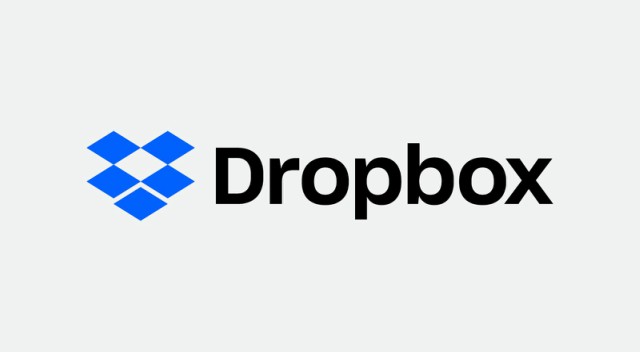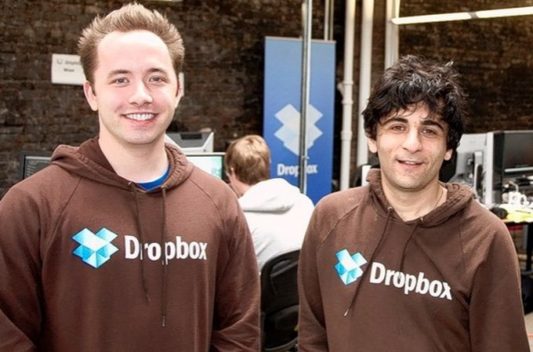
Dropbox
Dropbox is a file hosting service operated by American company Dropbox, Inc., headquartered in San Francisco, 
California, that offers cloud storage, file synchronization, personal cloud, and client software.
Founded: Jun 1, 2007
Founders: Drew Houston and Arash Ferdowsi
Headquarters: 333 Brannan St, San Francisco, CA 94107, USA
Operating Status: Active
Funding Status: IPO
Number of Funding Rounds : 7
Total Funding Amount : $1.7B
Number of Lead Investors : 5
Number of Investors : 35
Number of Acquisitions : 24
Number of Investments : 1
Dropbox’s mission is to unleash the world’s creative energy by designing a more enlightened way of working. 500 million registered users around the world use Dropbox to work the way they want, on any device, wherever they go. With over 300,000 businesses on Dropbox Business, we’re transforming everyday workflows and entire industries.
Stock Symbol : NASDAQ:DBX
Valuation at IPO : $9.2B
Money Raised at IPO : $756M
IPO Share Price : $21.00
IPO Date : Mar 23, 2018
In March 2017, Bloomberg reported that Dropbox had secured a US$600 million credit line, with the company expected to file for its initial public offering (IPO) “as soon as this year”.
In February 2018, Dropbox filed an IPO to be listed on the Nasdaq. The company’s initial intent was to raise $500 million. Dropbox’s stock rose 42 percent to $29.89 in its first day of trading on March 23, 2018.
On March 23, 2018 as investors raced to buy into the biggest innovation first sale of stock in over a year, Dropbox Inc.’s shares closed at $28.42, up in excess of 35 percent in their first day of trading on Friday. The stock opened at $29 on the NASDAQ and soared as much as 50 percent to a high of $31.60 in early trading. At the stock’s opening price, Dropbox had a market valuation of $12 billion, well above the $10-billion valuation it had in its last private funding round.
Business model
Dropbox uses a freemium business model, where users are offered a free account with a set storage size, with paid subscriptions available that offer more capacity and additional features.
Dropbox Basic users are given 2 gigabytes of free storage space. This can be expanded through referrals; users recommend the service to other people, and if those people start using the service, the user is awarded with additional 500 megabytes of storage space. Dropbox Basic users can earn up to 16 gigabytes through the referral program.
The Dropbox Plus subscription (named Dropbox Pro prior to March 2017) gives users 1 terabyte of storage space, as well as additional features, including:
Advanced sharing controls: When sharing a link to a file or folder, users can set passwords and expiration limits.
Remote wipe: If a device is stolen or lost, users can remotely wipe the Dropbox folder from the device the next time it comes online.
“Extended Version History”: An available add-on, it makes Dropbox keep deleted and previous versions of files for one year, a significant extension of the default 30-day recovery time.
In November 2013, Dropbox announced changes to “Dropbox for Business” that would enable users to connect both their personal Dropbox and their business Dropbox to the same device, with each of the folders being “properly labeled for personal or work, and come with its own password, contacts, settings, and files”. Furthermore, Dropbox announced shared audit logs, remote wipe for business administrators, and account transfers, as new features of its Business offering. In January 2017, Dropbox introduced “Smart Sync” for Business and Enterprise customers, a feature that lets Windows and macOS users see all files in the Dropbox folder, but only download specific files on-demand.
Similarly to Dropbox Basic, Dropbox Plus users can also earn extra space through referrals. Pro users earn 1 gigabyte per referral, up to 32 gigabytes.
Dropbox Business is Dropbox’s solution for corporations, adding more business-centered functionality for teams, including collaboration tools, advanced security and control, unlimited file recovery, user management and granular permissions, and options for unlimited storage. For large organizations, Dropbox offers Dropbox Enterprise, the “highest tier” of its product offerings, adding domain management tools, an assigned Dropbox customer support member, and help from “expert advisors” on deployment and user training.
In July 2016, Dropbox announced a new “AdminX” administrator dashboard for Business customers, offering improved control of company files and users. In June 2017, the AdminX dashboard was given a redesign and additional administrator functions, such as log-in durations, custom password strength parameters, and more granular subdomain verifications for specified teams.
Company partnerships
In September 2012, Facebook and Dropbox integrated to allow users in Facebook Groups to share files using Dropbox. In November 2014, Dropbox announced a partnership with Microsoft to integrate Dropbox and Microsoft Office applications on iOS, Android and the Office 365 applications on the web.
Technology
The Dropbox software enables users to drop any file into a designated folder. The file is then automatically uploaded to Dropbox’s cloud-based service and made available to any other of the user’s computers and devices that also have the Dropbox software installed, keeping the file up-to-date on all systems. When a file in a user’s Dropbox folder is changed, Dropbox only uploads the pieces of the file that have been changed, whenever possible.
When a file or folder is deleted, users can recover it within 30 days. For Dropbox Plus users, this recovery time can be extended to one year, by purchasing an “Extended Version History” add-on.
Dropbox accounts that are not accessed or emails not replied in a year are automatically deleted.
Dropbox also offers a LAN sync feature, where, instead of receiving information and data from the Dropbox servers, computers on the local network can exchange files directly between each other, potentially significantly improving synchronization speeds.
Originally, the Dropbox servers and computer apps were written in Python. In July 2014, Dropbox began migrating its backend infrastructure to Go.
In September 2012, Dropbox’s website codebase was rewritten from JavaScript to CoffeeScript.
Dropbox originally used Amazon’s S3 storage system to store user files, but between 2014 and 2016 they gradually moved away from Amazon to use their own hardware, referred to as “Magic Pocket”, due to Dropbox’s description as “a place where you keep all your stuff, it doesn’t get lost, and you can always access it”. In June 2017, the company announced a major global network expansion, aiming to increase synchronization speeds while cutting costs. The expansion, starting with 14 cities across 7 countries on 3 continents, adds “hundreds of gigabits of Internet connectivity with transit providers (regional and global ISPs), and hundreds of new peering partners (where we exchange traffic directly rather than through an ISP)”.
Dropbox uses SSL transfers for synchronization and stores the data via Advanced Encryption Standard (AES)-256 encryption.
The functionality of Dropbox can be integrated into third-party applications through an application programming interface (API).
Dropbox prevents sharing of copyrighted data, by checking the hash of files shared in public folders or between users against a blacklist of copyrighted material. This only applies to files or folders shared with other users or publicly, and not to files kept in an individual’s Dropbox folder that are not shared.
